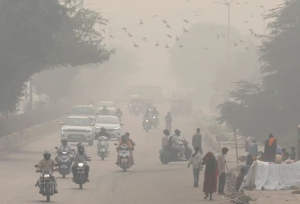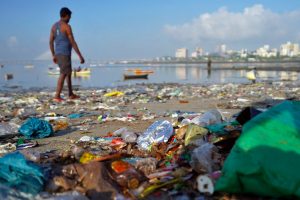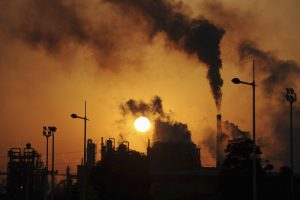China’s government has admitted that the country’s post-Covid industrial push is to blame for a spike in air pollution.
Rising industrial output and the pursuit of economic growth in some regions has caused a jump in emissions, said Liu Bingjiang, director of the department in charge of air pollution at the Ministry of Ecology and Environment (MEE), who also added that unusually warm weather was part of the problem too.
The consumption of gasoline and diesel had also returned to normal levels after China scrapped its “zero-Covid” restrictions at the end of last year, he said.
“This is where the problem lies – how to coordinate between economic development and environmental protection,” he said.
Also on AF: China EV Giant BYD Records 11-Fold Q4 Profit Jump
Liu said some regions had been pursuing high-polluting industrial projects in order to push economic growth, driving up pollution.
But unfavourable weather contributed to the smog, with temperatures hitting record highs for the time of year in some parts of the north, making it harder for pollution to disperse.
The lack of cold air contributed to smoggy weather in the north in early March, he said. Cold fronts from Siberia usually help to blow away the pollution.
In the first two months of the year, average concentrations of hazardous airborne particles known PM2.5, caused mainly by burning fossil fuels, rose 8.5% to 51 micrograms per cubic metre, according to data released by MEE in March.
The World Health Organisation recommends levels of no more than 5 micrograms.
Earlier in March, two sources told Reuters that China was considering cutting crude steel output by about 2.5% this year while extending a two-year policy to cut emissions in the world’s largest steel industry to meet its target to cut carbon emissions.
Air pollution was worsened by sandstorms in March. Liu said the number of sandstorms was now four times higher than in the 1960s, a consequence of rising temperatures and lower precipitation in the deserts of north China and neighbouring Mongolia.
- Reuters with additional editing by Sean O’Meara
Read more:
Warren Buffett-backed BYD Plunges on Pollution Probe
13 Chinese Cities Issue Smog Alerts as Factory Output Climbs
Mega Methane Leaks Risking Climate Disaster – Guardian
























